Today I'm excited to share a DIY natural jeweler's pickle made with very inexpensive ingredients.
Jeweler's pickle is neither an embalming fluid nor some strange moonshine - it's what you use to get fire scale off soldered objects.
(For all the super serious people out there, yes, I know that it isn't truly technically real fire scale, but that's what people tend to casually call it so please don't stress!)
If you work with metal and use heat, a pickle pot is essential.
Basically, a pickle is simply an acidic solution that removes oxidation and flux from a piece of soldered metal. Commercial jewelry pickles are available, and many jewelers choose to use various pool chemicals as more cost-effective pickles.
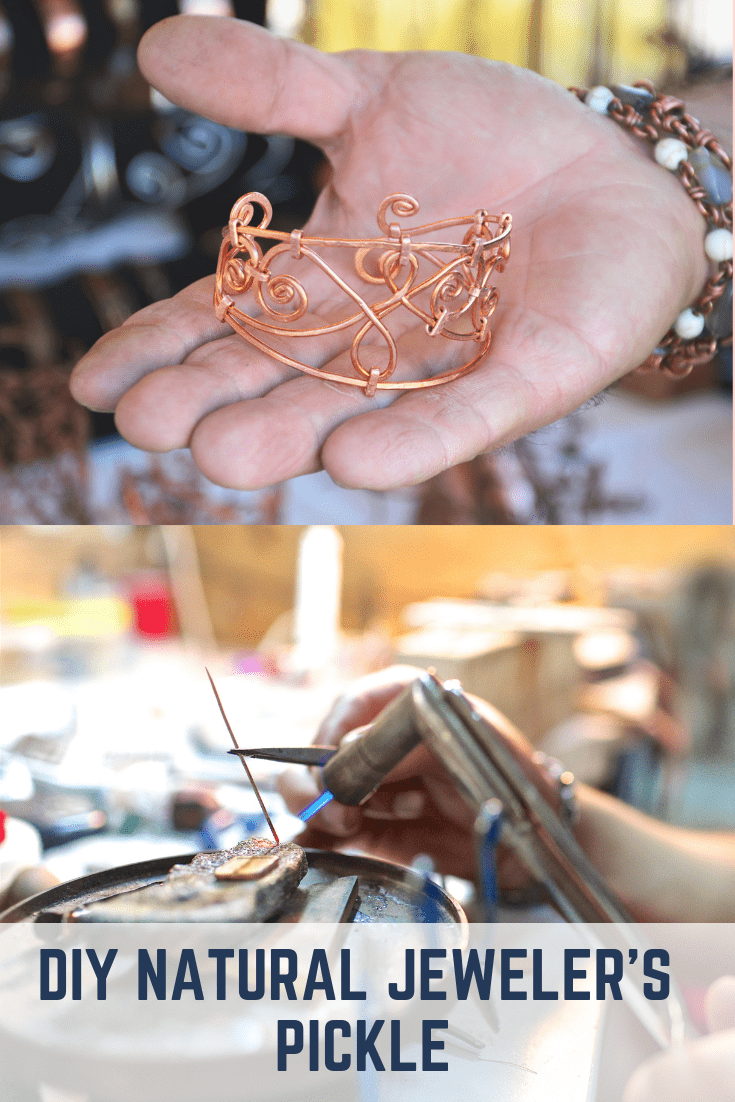
This post may include affiliate links, which means I may make a commission on purchases made through these links at no additional cost to you.
When I started soldering, pickeles sort of annoyed me. I realized that I needed a pickle pot, but I was loath to spend lots of money online to potentially harmful chemicals, there were no local jeweler's pickle sources, and pool supplies weren't really a viable option in the middle of winter. I figured there had to be a way to create a mildly acidic solution capable of removing some fire scale with things I could buy at the grocery store.
I was right.
DIY natural jeweler's pickle recipe
Some trial and error later, here is my recipe for a DIY jeweler's pickle that is way less toxic than the commercial options, eminantly affordable, and amazingly easy. It smells a little funny if you don't keep the lid on, but hey.
All you need is white vinegar, table salt, and maybe hydrogen peroxide.
All of these ingredients are dirt cheap and the worst thing that will happen from using it is that you might make your kitchen smell a little like a fish and chips stand for a bit. You won't sear your lungs, burn your skin, or have to buy a new crock pot just for chemicals.
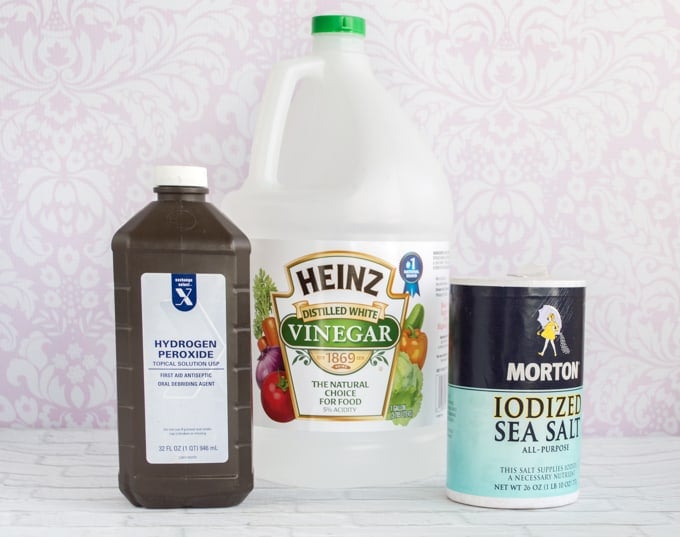
Because the pickle is acidic, you should only make it in glass or ceramic items. It will eat away at a metal pot, and putting it in metal can detract from its effectiveness.
I wasn't thinking clearly and first started using it in a metal pot - I could literally hear little pops and crackles as the pickle heated and it started working away at my pot! Luckily for me, it was a second hand thing from an old roommate, not one of my good pots. Please learn from my mistake and don't damage anything of yours!
The best thing to use is a crock pot, but you can also create a double boiler with a heatproof glass container, like a Pyrex measuring cup, to eat heat the pickle on the stove.
Additionally, make sure you only use copper or plastic utensils in the pickle pot. You could use wood, but wood will absorb the vinegar and make the spoon or tongs smell kind of funny!
If you stir the pot with any other metal, or place nickel silver items in it for cleaning, a chemical reaction will essentially cause random bits of fire scale to electroplate themselves to the jewelry you are attempting to clean.
Don't worry if you make a mistake or have to clean nickel silver. Just stir in peroxide until until the gunk re-removes itself from the items.
As an additional precaution - make sure to only use household-strength, "store bought" peroxide and vinegar (3% and 5% strength, respectively) if you add peroxide in order to avoid accidentally making a strong acid!
To create the pickle, simply pour about a cup of vinegar into your crock pot. You can mix in some water, too, if you want, but it just weakens the solution and makes it take longer to clean metal. Put the lid on the pot and put the heat up to medium or high. Heat is essential - a cold pickle works very poorly, if at all.
You'll be able to tell when the vinegar is getting warm because you'll see condensation form on the underside of the lid.
After the vinegar is warm, add in about a tablespoon of salt. You can add a little more, but don't add less! In general, you want to have about a generous tablespoon per cup of vinegar. Stir until the salt is fully dissolved.
Once the salt is dissolved, you're ready to add whatever needs cleaning!
Stir the pieces around a little, cover the pot, and let them sit for a minute or so. You should start to see the fire scale literally fall off. It's not the world's bests photo, but you can see the scale in the pot.
After letting them rest for a minute, fish your objects out with copper tongs or a nylon/plastic spoon. Scrub them lightly with a very soft bristle brass brush or a nylon brush. A
And there you have it! Bright and shiny metal items, free of fire scale for pennies on the dollar, when compared to commercially-available options.
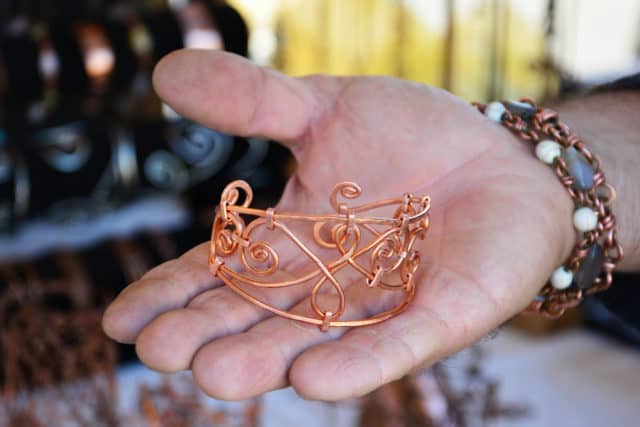
I love this pickle! It works as quickly as commercial pickles at a fraction of the price. The only thing you might need to buy online or from a specialty store is a pair of copper tongs. They're typically pretty inexpensive!
- Measures 9" in length
- Specifically designed for safe and dependable use with pickling and acid solutions
- Made from copper
You can store the pickle for later, if you'd like.
You can pretty much use it until it gets cloudy and stops working - just store it with the lid on and reheat it when you need to use it. You don't really need to keep it in the fridge since it consists of vinegar and salt.
A word of caution, though - let it finish cooling with the lid off or the salt will form an amazingly powerful crust that makes it virtually impossible to remove the containers lid! And, of course, don't store it in anything metal.
Once again, if you do accidentally put a metal utensil in it or have to clean nickel silver, just add a generous pour of 3% hydrogen peroxide to the mix.
Adding peroxide makes what folks call a "super pickle." I only do it when I have to (why waste ingredients?), but some people use it every time. If you do add peroxide, the solution will not store well since peroxide breaks down quickly in sunlight.
Cleaning other metals, like brass and silver, should not cause the same problem because they shouldn't contain nickel. I get a lot of questions from folks asking if they can use this pickle on silver or brass - yes, you absolutely can!
The safe, responsible way to dispose of the pickle is by putting it in a jar and asking your local recycling center, landfill, or trash company what they want you to do with it. They may have a special drop-off for things that are corrosive or potentially contaminated with metals.
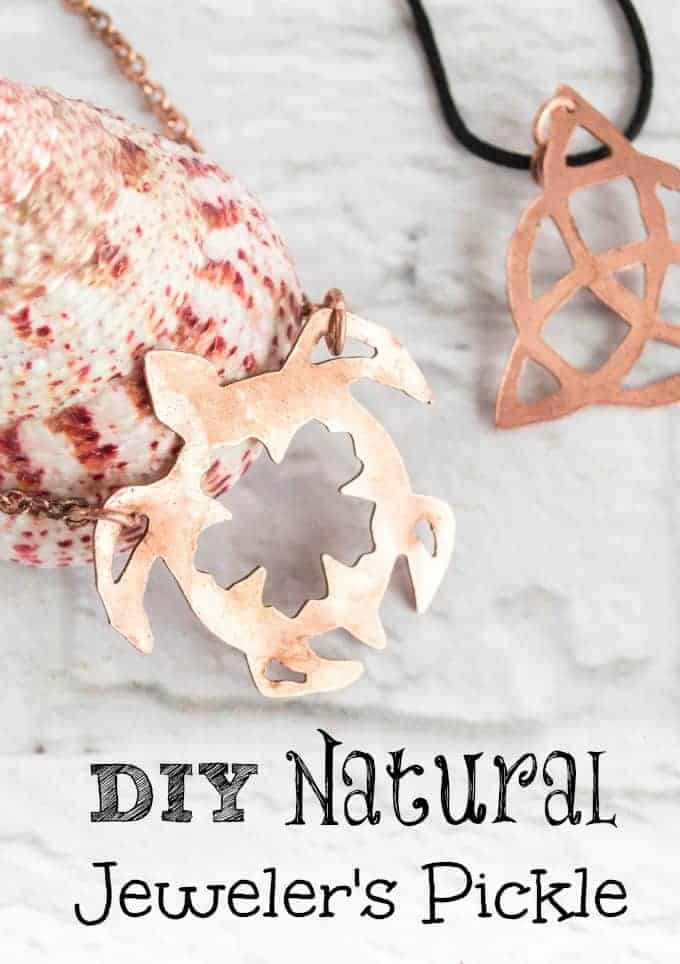
I hope you enjoyed this tutorial for DIY natural jeweler's pickle and found it helpful! What commercially available things do you enjoy making from scratch? I love hand making as much of my own products as possible and I enjoy the savings created by many homemade options - why do you choose to DIY things you could buy?

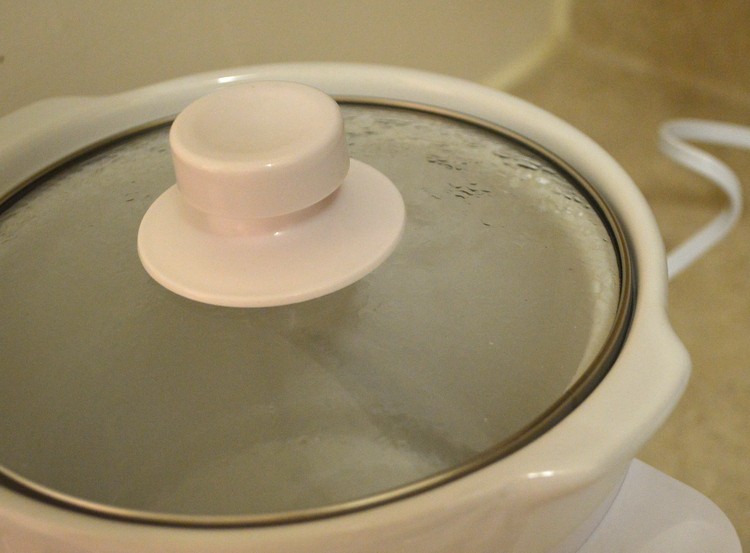
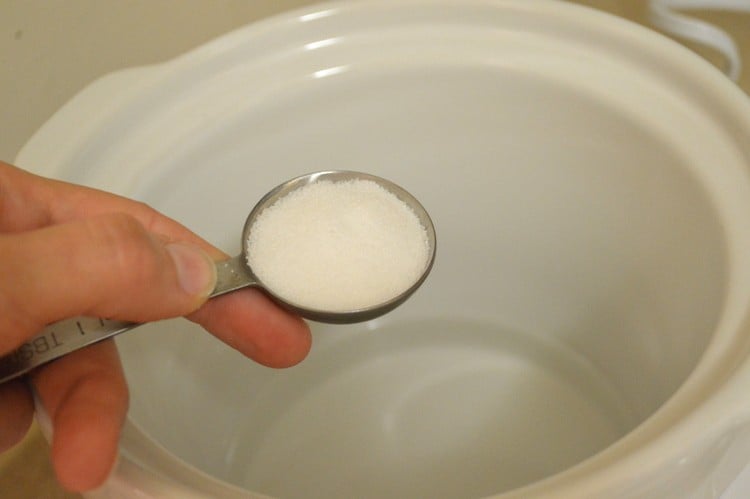
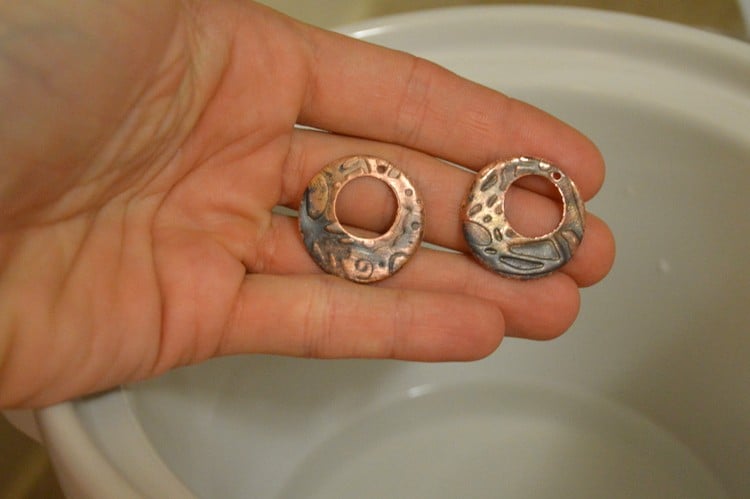
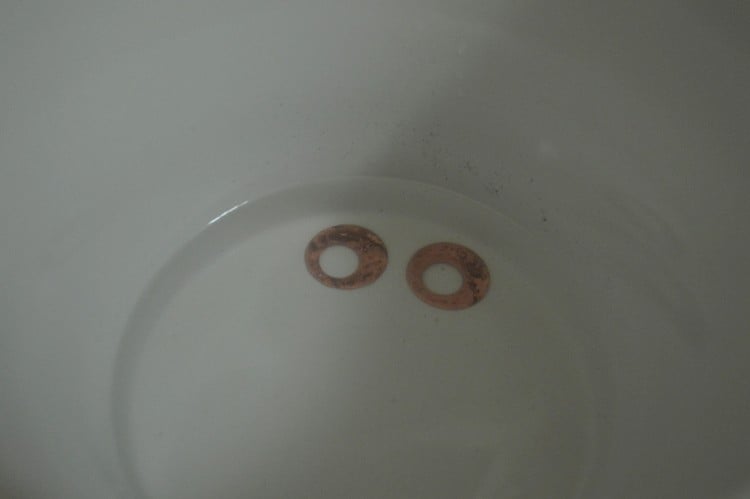
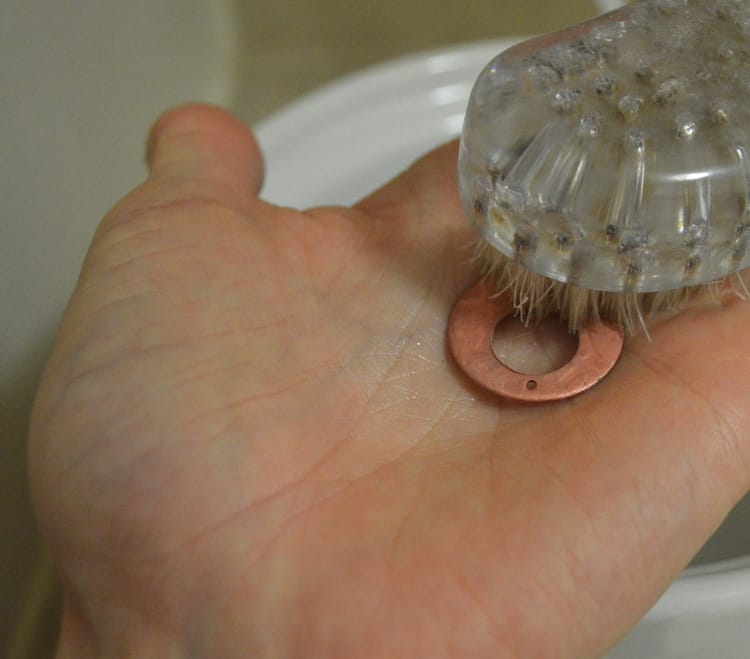



David Rose
"For example, the copper in sterling (an alloy of 925 parts fine silver and 75 parts copper), concentrates on the surface of the metal in a not too handsome black or copper colored stain when it is heated with a torch in an oxygen rich environment, or what we lay people call "air". Even though soldering or annealing in a vacuum or room filled with inert gas may help to stop fire scale, I'm addicted to breathing oxygen and don't have any immediate plans to stop.
First point about pickle that is often confusing to students is that pickle removes fire scale, not fire stain. Fire scale is the oxide that sits on top of the surface, drawn up and through the metal by the heat and oxygen. Fire stain, is the dark grey or copper colored oxide that is still inside the metal, visible just under the surface. Fire stain can't be removed by normal pickling and must be sanded off with abrasives. So, when students first use pickle, they're stunned to still see copper stains on their sterling, even after soaking it for a long, long time. That's the fire stain. All the surface scale has been cleaned away, but the stain inside the surface is still visible and not going anywhere without persuasion, no matter how much the students beg or plead with the teacher.
Fire Stain on Sterling Silver
Even more confusing, sometimes sterling will come out of the pickle looking matte white like fine silver, but with a slightly clouded blotchy mottling. This is from a process called depletion gilding. Repeated heating and pickling of your sterling strips away copper oxides (fire scale) and depletes the sterling at the surface of some of the copper content in the alloy. Eventually, the sterling will be go from black or copper stained with firescale to matte silver white"
April
This tutorial was by far the very best ever! I wish I had found your instructions a long time ago. Thanks for taking the time to help. April